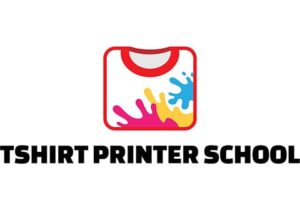It wasn’t that long ago before I had my own screen printer that it was an arduous task to make t-shirts for a small flag football team, a family reunion, or a company event. The time spent collecting money and arranging for all the shirts to be made on time was more time consuming than if I were making them. So when the time came to create an order, I would always make sure I had at least 20 shirts to keep the costs down. The process would include sending in a high-quality image that the screen printer would use to create the screen, then, depending on how many colors were used, extra charges were incurred.
As a shop owner, this is where a Direct To Garment printer comes into play and on the other side of that; the customer is now able to have a totally different experience. This versatile printer can bring in clients that were traditionally swayed by high set-up costs or minimum orders. My product portfolio is virtually endless now because if I don’t have it (the material), I can get it.
There are other options when it comes to printing on garments such as Dye-Sublimation or traditional Screen Printing. Dye Sublimation uses heat to transfer the image to the substrate as opposed to printing. The difference is the DTG printer has limitations, unlike Dye Sublimation which can make images look as if they were developed in the dark room. These results are nearly perfect and suitable for high-quality images, banners, and other purely visual mediums, but for t-shirts, it doesn’t work with 100% Cotton. I would be limited to polyester fabrics/garments, and I want to make t-shirts.
I have always enjoyed screen printing when I am not rushed, but it’s a lot of work. If there is a six-color shirt, the workload is so much more than going to my PC, adjusting a few settings, and selecting “Run.” There is no comparison when considering the workload, and the direct to garment quality is impeccable. I can put vivid images of anything on a t-shirt now, it’s amazing.
A Direct To Garment printer is basically a robust Inkjet Printer, but it can print on t-shirts and a variety of other substrates which allows the user to offer a wide variety of products and limits the outsourcing of jobs. Direct to Garment quality is limitless as it uses the full spectrum of colors, unlike the limitations that exist within the world of screen printing. The real benefit is having the ability to just print one at a time with images that can utilize gradients.
When printing, the t-shirt is prepped onto the printing surface, once that is complete, the printer proceeds to lay white ink as a base. The white ink is necessary to allow all of the colors to display on the material. Using this technology creates the potential for vivid results on both bright and dark materials. Some printers can lay down the white and CMYK inks simultaneously in one pass while others perform those passes separately. All I need to do is prep the material and allow the printer to do the rest.
There are two questions I asked myself when considering using a DTG printer:
1. How much does Direct to Garment Printing cost for me to get into?
As a small business owner, any investment I make is a large commitment. There are a few variables to consider that affect how much a Direct to Garment printer could cost. This might include speed, DPI, printable area, and volume. I have seen printers that started for under $3000 and others that carried a price tag of over $300,000. The higher priced machines can operate at higher speeds and hence produce more volume in a shorter amount of time, but they are definitely not in my price range or on my needs list. Ink is readily available online at prices that vary as much as the printers depending on the make and model but the only con of these printers are that even the entry level ones are expensive, but I can see the potential.
With $300,000 being a little beyond my budget, I looked into models that could accommodate my needs, and I feel that with a $2600 investment, I could see a profit in 150 shirts and then I would upgrade as needed.
2. How much does Direct to Garment printing cost for the customer and will it be a good return on investment?
This is the exciting part. Typically, if a customer wants to make a few t-shirts, they have to buy the shirts, create the graphic, pay the setup fees and after all is said and done, and a wait, an order of ten shirts can cost $30 a shirt, or more! Let’s not forget about the turnaround time. With a Direct to Garment printer, I can print one shirt for less than the price of a brand new shirt in most stores, on bright or dark material and they can have it in minutes! With customers able to instantly receive a garment or whatever else they want, I feel that my business will do nothing but thrive.
A customer will walk out of my place with a t-shirt that they created and only pay $25 for it. For the model I chose, with the ink, the shirt, and the 6 minutes of labor, the shirt is $7.50 out the door which nets me $17.50. Did I mention that only took 6 minutes of my time? By empowering my customers, I can assure you they will return for more.

